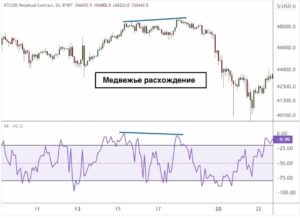Содержание
By default, these fees are put back into the liquidity pool, but can be collected any time. It’s difficult to know what the trade-off is between revenues from fees and losses from directional movements without knowing the amount of in-between trades. Yield farming is a popular decentralized financial instrument in DeFi that yields capital by extracting value from providing liquidity to decentralized exchanges.
- As you can also see in the below diagram, the impermanent loss increases with the size of the divergence between the initial price and the current price.
- We advise you to familiarise yourself with the concept of impermanent loss and to do a few test calculations before you enter any liquidity pool taking into account the rewards that you may generate over time.
- Many exchanges, on the outside, appear to be secure, trustworthy, and liquid.
- Governance tokens are used to make decisions about upgrades to the Uniswap protocol, so investors who own Uniswap can have a say on how the project is upgraded.
The arrival of DeFi changed the game by allowing users to earn passive income by deploying their assets as liquidity on decentralized exchanges, lending protocols, and liquidity pools on other kinds of protocols. In the context of DEXs and AMMS, DeFi specifically made it possible to increase one’s capital by lending it to newly built trading platforms. Liquidity pools use smart contracts on Ethereum’s blockchain to provide liquidity for decentralized exchanges. Liquidity providers can use their Ethereum wallet to send tokens to a liquidity pool, where investors’ funds are aggregated for liquidity on DEXes. Liquidity mining is a process in which crypto holders lend assets to a decentralized exchange in return for rewards.
More Than A Liquidity Provider
Each day Shrimpy executes over 200,000 automated trades on behalf of our investor community. Additionally, the firm’s innovative, tailored product offering is akin to what you would find at a tier one investment bank. Is one of the few firms able to continually price, execute and settle trades. Sign up for This Week in DeFi to get the latest cryptocurrency and DeFi trends. The departure from the “free” aspect with V3 — which occurred when Uniswap temporarily locked V3 behind the non-GPL license — can be also viewed as a departure from the core on which Uniswap was built. When this project surfaced, it was meant to be open source and available to others who wanted to take advantage of the protocol.

There is also the SmartTrade trading and aggregation system, which finds and compares various liquidity sources to find the best prices between any two tokens. DODO Vending Machine and DODO Private Pool are a duo of features that allow liquidity providers to create and manage their own market-making strategies. Liquidity mining is simply a passive income method that helps crypto holders profit by utilizing their existing assets, rather than leaving them inactive in cold storage. Assets are lent to a decentralized exchange and in return, the platform distributes fees earned from trading to each liquidity provider proportionally. Since NFTs can hold separate values for each token, Uniswap V3 lets liquidity providers choose the price range of crypto assets that they wish to provide liquidity at. This custom price range is represented by an NFT which you can use to remove your liquidity at any time.
With DEXes, smart contracts calculate the price of an asset by dividing the total amount of tokens in the liquidity pool by each other. Uniswap is a decentralized exchange that can be used for swapping ERC-20 coins and earning rewards through liquidity pools. What makes the Uniswap platform attractive is that it offers users the ability to trade their crypto without having to go through laborious verification processes or other account approval measures. Liquidity providers earn fees from transactions on the DeFi platform they provide liquidity on.
What Is Cryptocurrency Liquidity?
There are also other reasons like providing liquidity for your own project’s tokens or as a specific strategy (e.g. automated profit-taking). Liquidity pools consist of transactions traded against a smart contract and not other traders, as in the traditional order book model. Anyone can become a liquidity provider by depositing crypto into a liquidity pool to earn trading fees in proportion to their share in the pool. The PMM is one of many tools that allow DODO to offer liquidity comparable to centralized exchanges.
It is essential that multi-asset liquidity is provided by the liquidity provider together with access to the FIX protocol and historical data. In addition, a nominated account in different currencies should ideally be an option, as well as the ability to accept all major stable tokens and cryptos for depositing and withdrawal. Users who want access to a platform that offers a wide range of token options, pools, and low transaction fees — even with V3 — may want to consider this platform. It’s the top choice in platforms for a reason, and the functionality is simple enough for even the newest users.
The process is entirely decentralized and does not require any kind of KYC documentation. In the case of Uniswap, and all DEXs who use the same AMM model, crypto holders must provide equal portions of tokens . If we have 4 ETH tokens (where each is priced https://xcritical.com/ $2,500) we have a total of $10,000. Therefore, lending 4 ETH means that we also have to provide 10,000 USDT (valued at $1 per token). When Uniswap updated to Uniswap V2, the protocol airdropped 400 UNI tokens to every Ethereum wallet that used Uniswap V1.
Liquidity is a concept that is important to understand when dealing with cryptocurrencies. In terms of defining liquidity, it is essentially the ability of an asset to be quickly converted into cash. In the context of cryptocurrency liquidity it refers to the ease in which a coin can be converted into cash or What is Crypto Liquidity and How to Find Liquidity Provider other coins. Assuming you believe in the slowdown of a bull market and want to take profits, you can enter a pool with a stablecoin (e.g. USDC) and the asset you want to take profits in (e.g. RUNE). When RUNE climbs in price, the pool will automatically sell it for USDC and therefore take profits for you.
Wrapped tokens are assets that represent a tokenized version of another crypto asset. For example, a cryptocurrency like WBTC is simply the ERC-20 version of the real Bitcoin, whose price is pegged to BTC. Began to build out its funding and derivatives offering more than a year ago, complementing its significant spot trading franchise. “On the one side, we provide execution services to the more alpha-focused traders such as hedge funds. In this article, we’ll take you through the steps of investing in a liquidity pool via Zerion.
How Do I Invest In A Liquidity Pool?
Then, when any trade occurs within the pool, the trader pays a transaction fee which is then transferred to you directly into your share of the pool as a reward. Uniswap is primarily limited to ERC-20 coins, which can be limiting for users who want more from the platform. A good alternative for these users may be 1inch, which offers access to tokens on multiple blockchains on one platform.
What Is Staking? – Don’t Stake your Crypto until you’ve read this – The Defiant – DeFi News
What Is Staking? – Don’t Stake your Crypto until you’ve read this.
Posted: Mon, 25 Jul 2022 07:00:00 GMT [source]
This is because if a hacker were able to hack the contract, they’d be able to seize all the funds that are held inside of it. A liquidity provider should be able to implement FIX protocol and other APIs, MT4/MT5 bridge connections and FIX bridges. Liquidity providers should be regulated in the same way as brokers to ensure they are operating under the industry’s best practices and that there is a prime broker backing up the liquidity provider.
When you are dealing with borderless, digital transactions, there are a whole new host of problems that must be faced to attain professional, investment-grade liquidity. Whenever you choose to use an unregulated exchange, or smaller OTC options, you are essentially rolling the dice with companies or individuals that can only really give you their word that your investment is liquid. And, until these problems can be addressed, Liquidity will continue to be a large issue in the Digital Asset space, so let’s explore them. Typically liquidity providers are investors that want to put their digital assets to work in order to achieve additional passive income through fees and other rewards.
How Liquidity Provider Tokens Work
Uniswap is a DEX, meaning that by the very nature of the platform you can’t move fiat currency on or off of the exchange. You’ll need to use a centralized exchange and go through the laborious verification process instead. Prior to DODO NFT, though, there has not been a solution that could offer enough cost-effective liquidity to ensure success. If a token decreases in value, then you’ll be selling the higher valued token for the crypto that’s falling in value. This loss is impermanent because if the token appreciates after losing value, you’ll have more funds allocated to that token, and you’ll end up making your money back. If there is a significant amount of assets stored in a smart contract, say over $1 million, the contract should be pretty secure.
How Blockchain Tech Fits Into Defi
Many crypto exchanges are excellent, but they present a number of issues for counterparties. Offshore exchanges are a potential concern from a credit perspective and unregulated exchanges pose difficulties for certain trading activities. While smart contracts have been hacked in the past, most smart contracts today are very secure. A good way to gauge the security of a smart contract is by looking at the value of the funds locked in the contract.
Are Smart Contracts Safe?
Be the first to put your crypto investments on autopilot with digital asset allocation that helps you safely and securely optimize your portfolio. Governance tokens are cryptocurrencies that represent voting power on a DeFi protocol. After you sign up and connect your first exchange account, you’ll deploy an investment-maximizing strategy in as few as 5-minutes. Take 134,457,994 and divide it by 79,140 to determine the price of Ethereum would be $1,698.13 on Uniswap’s exchange. Different countries have adopted different stances on cryptocurrencies with them being banned in several, allowed in some or disputed in others.
But users who want lower gas fees may find PancakeSwap to be a good alternative since it runs on the scalable Binance Smart Chain , which has gas fees that typically average just pennies per transaction. While earlier versions of Uniswap were fee-free, that isn’t the case with V3. The protocol isn’t widely available to competitors, either, as Uniswap will not be available as open source until 2023. It also means that users cannot yet get the same technology in a fee-free platform. The first version of the Uniswap protocol was more of a proof of concept than anything, however. It didn’t allow for any type of exchange — other than directly from an Ethereum coin to a token that followed the Ethereum blockchain’s coin protocol, ERC-20.
Dark Liquidity Pools.In crypto markets, large trades (specifically 6-figure-plus trades), are relatively rare. Crypto markets are extremely volatile, and utilizing computational trading and small frequent trades are safer and more effective. These types of trades can occur multiple times a day, which seems normal to the average crypto trader, but to the average institutional investor, multiple trades per day is a lot. So, when a seller wants to execute a large trade, many exchanges are unable to process them through their platform, and they must access a Dark Liquidity Pool, or Siloed Liquidity Pool.
However, there is a risk of buying fake or dubious coins on this platform if you aren’t careful, so you’ll need to do some homework to keep your wallet, and your crypto, safe. There’s also a risk of smart contract exploit, but given V2 and V3 have been out with no issues for a long time, the risk is minimal or non-existent. No, users put liquidity into decentralized exchanges in order for others to trade, and by doing so they can earn fees. These LP tokens are proof you own part of the liquidity pool which you can use to remove your crypto tokens from the liquidity pool at any time. The fees earned from transactions go directly into the liquidity pool, so your token holdings will appreciate proportionately with the growth of the liquidity pool. While there are tons of options to choose from, the Uniswap platform has consistently landed at the top of the DEX totem pole.
Like stated earlier, many customers get their funds withheld, locked up, or even stolen in some instances from what appears to be reliable exchanges. This is a bigger risk for users who want to purchase tokens very early — and well before they’ve become mainstream — in order to maximize profits, but is a risk nonetheless. That said, it should be emphasized that only Ethereum-based assets are currently supported in the current version. While it is possible to wrap cryptocurrencies like Bitcoin and trade it via Uniswap, at this point in time other protocols are not supported via Uniswap markets.




